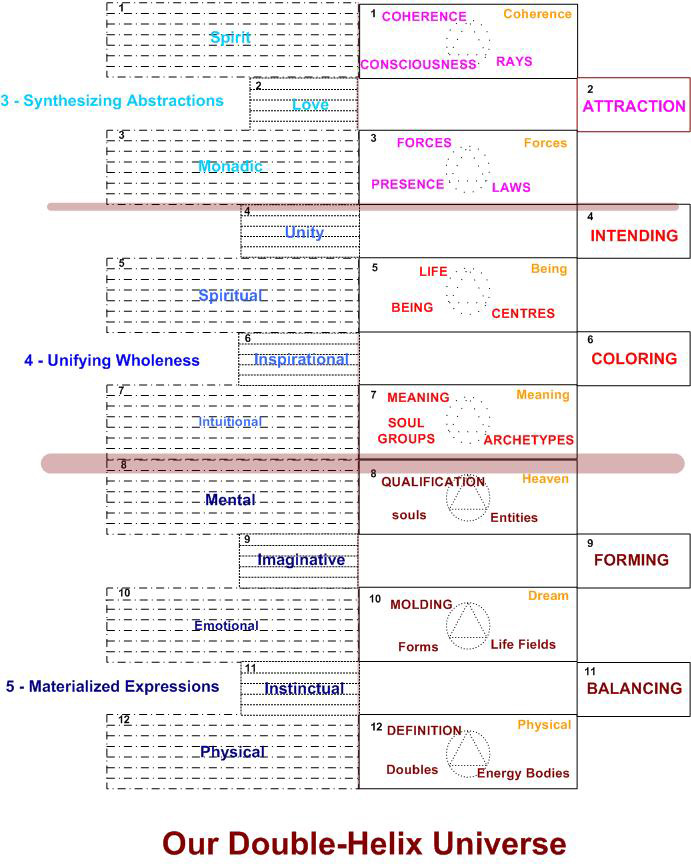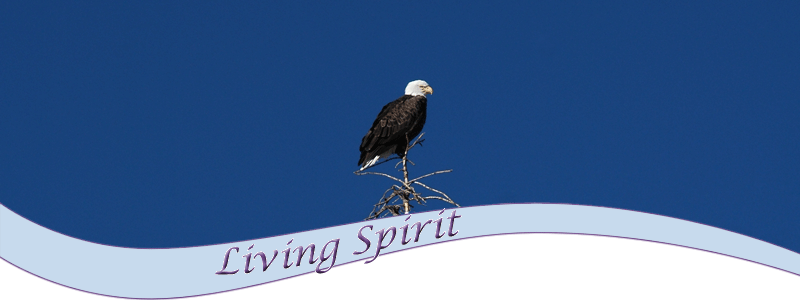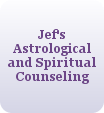 From Lao Tzu within Eastern mysticism, force is the subtle law of all existence and non existence, its own law, its own reason. From Sri Aurobindo, the divine Force leads us to fulfillment. The Force of the Divine makes all action possible. Divine Shakti manifests as a universal Force creating, sustaining, maintaining and directing all movement and workings in the universe. This Shakti reveals itself as presence, potentialities of the infinite existence, consciousness, will and delight. Gurdjieff saw the one Force and the one Law as the independent Will of the Absolute which created three Forces and three Laws, which intern govern the second order Worlds. These three active Forces are Brahma, Vishnu and Shiva.
From Lao Tzu within Eastern mysticism, force is the subtle law of all existence and non existence, its own law, its own reason. From Sri Aurobindo, the divine Force leads us to fulfillment. The Force of the Divine makes all action possible. Divine Shakti manifests as a universal Force creating, sustaining, maintaining and directing all movement and workings in the universe. This Shakti reveals itself as presence, potentialities of the infinite existence, consciousness, will and delight. Gurdjieff saw the one Force and the one Law as the independent Will of the Absolute which created three Forces and three Laws, which intern govern the second order Worlds. These three active Forces are Brahma, Vishnu and Shiva.
 Within early Western philosophy, the concept of force was defined as a primary constituent of physical reality and a regulative element in the universe. Force is an efficient cause of change and motion, which is something inherent in matter.
Within early Western philosophy, the concept of force was defined as a primary constituent of physical reality and a regulative element in the universe. Force is an efficient cause of change and motion, which is something inherent in matter.
Take a Journey through our
Spirit/Matter Universe
The Oneness of Presence
by Jef Bartow
 Working out the specifics of the various Realms of Subjectivity necessitated the difficult process of delineating terms that have taken on overlapping and/or synonymous meanings. Some of these terms are energy, force, rays, aspects, vibrations, spirit, matter, consciousness, being, soul, etc. The essence of force and its delineation from energy is my reason for labeling our 2nd outer subjective Realm, the Realm of Forces.
Working out the specifics of the various Realms of Subjectivity necessitated the difficult process of delineating terms that have taken on overlapping and/or synonymous meanings. Some of these terms are energy, force, rays, aspects, vibrations, spirit, matter, consciousness, being, soul, etc. The essence of force and its delineation from energy is my reason for labeling our 2nd outer subjective Realm, the Realm of Forces.
Force
 I define consciousness as the resultant awareness and perceptive response which develops from the interaction of dualities and multiplicities. The essence of force is that which produces the interplay of dualities and multiplicities in the creative process. From one perspective, force is the Will-to-relate. From another, it is the activity of intelligence within matter. It is that which produces movement or motion within our continuum of Spirit/Matter. All in all, Force is the Energy/Process which originates from the second highest level of Spirit within our systemic universe.
I define consciousness as the resultant awareness and perceptive response which develops from the interaction of dualities and multiplicities. The essence of force is that which produces the interplay of dualities and multiplicities in the creative process. From one perspective, force is the Will-to-relate. From another, it is the activity of intelligence within matter. It is that which produces movement or motion within our continuum of Spirit/Matter. All in all, Force is the Energy/Process which originates from the second highest level of Spirit within our systemic universe.
 Webster's defines force as "strength; energy; intensity of power; vigor; influence." Force is the cause or agent which puts an object at rest into motion or affects the motion of an object. Synonyms are compel: "a driving irresistibly to some action;" and constrain: "to hold in confining or close bounds."
Webster's defines force as "strength; energy; intensity of power; vigor; influence." Force is the cause or agent which puts an object at rest into motion or affects the motion of an object. Synonyms are compel: "a driving irresistibly to some action;" and constrain: "to hold in confining or close bounds."
Our articles are available for reproduction for all members. Please give credit to the author.
For non-members, contact us for permission to reproduce articles.
 With the beginning of science as an independent perspective in the 1600's, the concept of force moved from the idea of being an external phenomenon to intrinsic internal facets of matter. Newton's equation F = ma solidified force as the measurable change of momentum within matter. Force in matter appears as an intrinsic property of particles.
With the beginning of science as an independent perspective in the 1600's, the concept of force moved from the idea of being an external phenomenon to intrinsic internal facets of matter. Newton's equation F = ma solidified force as the measurable change of momentum within matter. Force in matter appears as an intrinsic property of particles.
 According to Brian Greene, forces are connected with enforcing symmetries.
According to Brian Greene, forces are connected with enforcing symmetries.
"Symmetries highlight an order and coherence in the workings of nature. The elegance of rich, complex, and diverse phenomena emerging from a simple set of universal laws is at least part of what physicists mean when they invoke the term ‘beautiful’."
(The Elegant Universe, pg. 169)
 Within quantum theory, force has been relegated to the exchange of virtual particles. These particles differ from ordinary matter particles in their "spin." These particles also have no mass. Unfortunately, quantum theorists conclude that virtual particles exist, but have yet to fulfill "scientific method’s" rule of observation. As concluded in the Tao of Physics, force and matter are different aspects of the same phenomenon.
Within quantum theory, force has been relegated to the exchange of virtual particles. These particles differ from ordinary matter particles in their "spin." These particles also have no mass. Unfortunately, quantum theorists conclude that virtual particles exist, but have yet to fulfill "scientific method’s" rule of observation. As concluded in the Tao of Physics, force and matter are different aspects of the same phenomenon.
 Within transpersonal psychology, force seems to be defined similar to philosophical and scientific concepts. C. G. Jung makes some subtle comments regarding force that demonstrate another perspective. He equates force with intent and with will subjectively (i.e. intentionality). He defines lines of force as that which indicates motion and activity. Jung related force to energy in that "energy is always expressed specifically as motion and force when actual and as a condition or state when potential." For me, this subtle delineation reconciles the typical usage of energy as force while also equating energy with states or levels of Spirit/Matter.
Within transpersonal psychology, force seems to be defined similar to philosophical and scientific concepts. C. G. Jung makes some subtle comments regarding force that demonstrate another perspective. He equates force with intent and with will subjectively (i.e. intentionality). He defines lines of force as that which indicates motion and activity. Jung related force to energy in that "energy is always expressed specifically as motion and force when actual and as a condition or state when potential." For me, this subtle delineation reconciles the typical usage of energy as force while also equating energy with states or levels of Spirit/Matter.
 Metaphysically, H.P. Blavatsky defines force as the "transformation of supra-conscious thought of the Logos into energy." Mulaprakriti, or unmanifested primordial matter, is inert without force and becomes first objectified through force. To her, the forces of nature are differentiated aspects of Universal Motion. Implied here are levels of forces from the Universal to those affecting the atoms of physicality.
Metaphysically, H.P. Blavatsky defines force as the "transformation of supra-conscious thought of the Logos into energy." Mulaprakriti, or unmanifested primordial matter, is inert without force and becomes first objectified through force. To her, the forces of nature are differentiated aspects of Universal Motion. Implied here are levels of forces from the Universal to those affecting the atoms of physicality.
 The Tibetan reflects a similar perspective in defining “Fohat” as the force which brings "latency into activity and potentialities into demonstrated powers." He defines the term transmutation as the mode where force is changed into energy. He further defines 49 types of forces which all forms respond to.
The Tibetan reflects a similar perspective in defining “Fohat” as the force which brings "latency into activity and potentialities into demonstrated powers." He defines the term transmutation as the mode where force is changed into energy. He further defines 49 types of forces which all forms respond to.
 From these various perspectives, I would begin by drawing from Webster's in which force is an agent or cause of motion. From Sri Aurobindo, force makes all action possible; creating, sustaining, maintaining and directing all movement and workings in the universe. From philosophy and science, forces are intrinsic facets within matter and create measurable change of movement. One of the reasons that forces exist is to enforce symmetries which provide an order and coherence throughout manifestation. Finally, from metaphysics, force brings unmanifested potentiality into activity.
From these various perspectives, I would begin by drawing from Webster's in which force is an agent or cause of motion. From Sri Aurobindo, force makes all action possible; creating, sustaining, maintaining and directing all movement and workings in the universe. From philosophy and science, forces are intrinsic facets within matter and create measurable change of movement. One of the reasons that forces exist is to enforce symmetries which provide an order and coherence throughout manifestation. Finally, from metaphysics, force brings unmanifested potentiality into activity.
Laws
 Unfolded from higher levels of Spirit, we have Laws as the Form aspect within this Realm of Forces. Remember, Form here is really not form yet, but a way of delineating the systems of expression in this Realm. Laws at this level of synthesizing Spirit are not much different than the laws that we're aware of. To me, the main difference is the scope and energetic form of laws.
Unfolded from higher levels of Spirit, we have Laws as the Form aspect within this Realm of Forces. Remember, Form here is really not form yet, but a way of delineating the systems of expression in this Realm. Laws at this level of synthesizing Spirit are not much different than the laws that we're aware of. To me, the main difference is the scope and energetic form of laws.
 Webster's equates laws to "rules of conduct; rule or principle expected to be observed; divine commandment;" and "events and activities that have been observed to occur with unvarying uniformity under the same conditions." The Laws at this level are the intelligent rules, principles and commandments which create uniform activity and expression throughout manifested Matter.
Webster's equates laws to "rules of conduct; rule or principle expected to be observed; divine commandment;" and "events and activities that have been observed to occur with unvarying uniformity under the same conditions." The Laws at this level are the intelligent rules, principles and commandments which create uniform activity and expression throughout manifested Matter.
 As I look to various fields of study to assist in defining Laws, I find that each defines Law at various levels, both of Spirit and of Matter. Within almost every perspective there are Laws that apply to the spiritualized Planes and Realms and others which apply to the material Planes and Realms.
As I look to various fields of study to assist in defining Laws, I find that each defines Law at various levels, both of Spirit and of Matter. Within almost every perspective there are Laws that apply to the spiritualized Planes and Realms and others which apply to the material Planes and Realms.
 Law within early Western theology took the form of commandments, mandates and precepts from God. Man was instructed to perform all things according to the Law of the Lord. Psychologically, C.G. Jung defined various psychological Laws which regulate the functioning of the opposites. He defined unconscious laws, causal laws and even laws governing the structure of a dream.
Law within early Western theology took the form of commandments, mandates and precepts from God. Man was instructed to perform all things according to the Law of the Lord. Psychologically, C.G. Jung defined various psychological Laws which regulate the functioning of the opposites. He defined unconscious laws, causal laws and even laws governing the structure of a dream.
 David Bohm scientifically defined law as the "system to describe behaviors and relatedness of physical phenomena; that which "relates the movement of each part to all of the parts." Another scientific view equates law to a mechanism of self organization. Consequently, law according to science is the mechanism of self organization which governs, describes and limits the relatedness and behavior of things.
David Bohm scientifically defined law as the "system to describe behaviors and relatedness of physical phenomena; that which "relates the movement of each part to all of the parts." Another scientific view equates law to a mechanism of self organization. Consequently, law according to science is the mechanism of self organization which governs, describes and limits the relatedness and behavior of things.
 I attribute an interesting aspect of Law in this subjective Realm to Spinoza within philosophy. For him, the perfect law "coordinates conflicting forces to avoid the ruin, while increasing the power of the whole." Within the continuum of Spirit/Matter, the Laws from synthesizing Spirit coordinate the potential conflicting expression of Forces throughout the lower Planes and Realms. Further, they govern, sustain and maintain coherence and uniformity within active material manifestation.
I attribute an interesting aspect of Law in this subjective Realm to Spinoza within philosophy. For him, the perfect law "coordinates conflicting forces to avoid the ruin, while increasing the power of the whole." Within the continuum of Spirit/Matter, the Laws from synthesizing Spirit coordinate the potential conflicting expression of Forces throughout the lower Planes and Realms. Further, they govern, sustain and maintain coherence and uniformity within active material manifestation.
Presence
To complete our description of the Realm of Forces, the Consciousness aspect at this level is “Presence” including our God Within. Presence in a general sense is to be present; more specifically an influence or divine spirit felt to be present. This Presence is the “presence of God” described throughout Western theology. Within Eastern mysticism, this Presence is the Absolute within certain teachings and the "Independent" or "One" in others. I define this Presence as an extension of our cosmic Being (Solar Logos) within our systemic universe.
 Within this Presence of our God, the subjective expression of our Monad, the God Within is actualized. Our God Within is the subjective Spirit which overshadows our soul and Personality life. Until we make this conscious through progressive growth and transmutation of our lower forces and forms, our God Within is only a potential extension from Presence in the Realm of Forces. When we develop an awareness and perceptive response (consciousness) at this level, we become a co-creator with God as an individualized consciousness within Spirit.
Within this Presence of our God, the subjective expression of our Monad, the God Within is actualized. Our God Within is the subjective Spirit which overshadows our soul and Personality life. Until we make this conscious through progressive growth and transmutation of our lower forces and forms, our God Within is only a potential extension from Presence in the Realm of Forces. When we develop an awareness and perceptive response (consciousness) at this level, we become a co-creator with God as an individualized consciousness within Spirit.
 Utilizing a water analogy, our God Within is one molecule of water within the ocean of the Presence of our cosmic Being. Throughout much of cyclic manifestation, each God Within molecule is completely dependant on all other God Within molecules, like the oneness of the ocean. Through one's growth of consciousness/ beingness, the God Within individualizes itself into a unique independent nature. This is how we complete our spiritual journey within this solar system, our universe.
Utilizing a water analogy, our God Within is one molecule of water within the ocean of the Presence of our cosmic Being. Throughout much of cyclic manifestation, each God Within molecule is completely dependant on all other God Within molecules, like the oneness of the ocean. Through one's growth of consciousness/ beingness, the God Within individualizes itself into a unique independent nature. This is how we complete our spiritual journey within this solar system, our universe.







